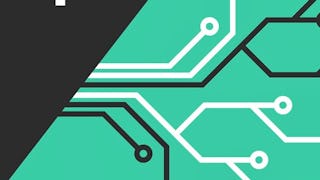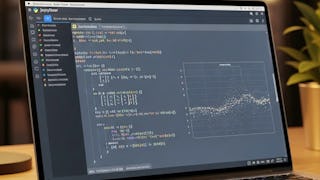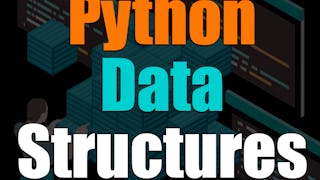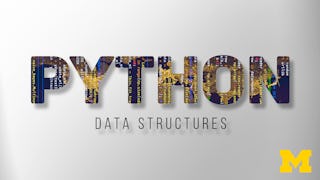Updated in May 2025.
This course now features Coursera Coach! A smarter way to learn with interactive, real-time conversations that help you test your knowledge, challenge assumptions, and deepen your understanding as you progress through the course. This course will help you master essential data structures in Python, enabling you to write efficient code, optimize memory, and solve complex problems. By the end, you’ll be proficient in implementing arrays, linked lists, stacks, queues, trees, and graphs, along with recursion, searching, and sorting techniques. You’ll start with fundamental data structures like arrays, lists, tuples, sets, and dictionaries, learning operations such as insertion, deletion, and searching. Next, you’ll explore dynamic structures like linked lists, stacks, and queues, followed by recursion for problem-solving. The course then covers hierarchical structures like binary trees and binary search trees, focusing on traversal and search optimization. Finally, you’ll dive into graphs, learning representation techniques for network-based data structures. Ideal for students and aspiring developers, this course strengthens problem-solving skills. A basic understanding of Python is recommended as the course progresses from fundamentals to advanced topics.


















